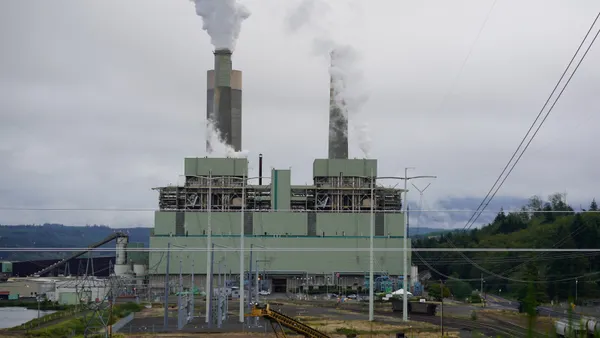Dive Brief:
- Hawaiian Electric is asking state regulators for authorization to invest around $190 million over five years on upgrading its transmission and distribution infrastructure to be more resilient to the impacts of a changing climate, as the first phase of what the utility expects will be a long-term climate adaptation push.
- In an application filed with the Hawaii Public Utilities Commission on June 30, the utility outlined some of the investments it wants to make, including strengthening transmission lines against high winds, as well as distribution lines that serve critical facilities like hospitals and emergency shelters.
- If Hawaiian Electric is allowed to recover these investments from its customers, it estimates that the average monthly bill of a typical residential customer will increase by $0.33 on Oahu, $0.86 on Hawaii Island and $0.71 on Maui.
Dive Insight:
Hawaii and other states across the nation have been seeing increasingly frequent and extreme weather events that warrant investing in the state’s electric grid, according to Hawaiian Electric. In the last seven years alone, Gov. David Ige, D, has issued 15 emergency proclamations related to hurricanes, tropical storms, wildfire and other weather events.
Hawaiian Electric’s application to the state public utilities commission asks regulators to approve nearly $190 million over a five-year period that would strengthen transmission lines and critical overhead poles, help with flood monitoring at substations, move certain overhead distribution lines on Oahu underground, remove trees that could pose a threat to grid infrastructure, and prevent wildfires.
The utility operates 9,400 miles of transmission and distribution power lines across the state, serving 95% of its population. In total, the utility is aiming to harden roughly 1,200 poles on Oahu, Maui and Hawaii Island from 2023 through 2027.
Reliable electric grids are a critical driver of economic activity in Hawaii and “there’s an urgent need to enhance our power systems to guard against extreme weather events that are increasing in both frequency and intensity due to climate change,” Colton Ching, Hawaiian Electric’s senior vice president of planning and technology, said in a statement.
“While there is a cost to preparing for more adverse effects of climate change, the cost of inaction is much higher,” Ching said.
“The past experience [in Hawaii] has been that we have outages any time there’s a stiff wind. The grid is aging, and I believe it’s vulnerable just in general – and then you have to factor in the climate change concern and the extreme weather concern,” said Isaac Moriwake, managing attorney with Earthjustice, in an interview.
That being said, different stakeholders have different views of what resilience means, and whether it includes utility-centric solutions like power plants and hardening existing grid infrastructure, or distributed resources like microgrids, according to Moriwake.
“In Hawaii, we haven’t really had an in-depth discussion about that yet… so, at least, this application is a conversation starter,” he added.
Hawaiian Electric also addressed this issue in its application, stating that its proposed investments are complementary to microgrid and other distributed resources. Strengthening distribution infrastructure – including the lines that serve critical customers – can complement microgrids as a resilience solution, and hardening transmission and distribution infrastructure will better enable multiple distributed resources to combine their output into the system, the utility said.















